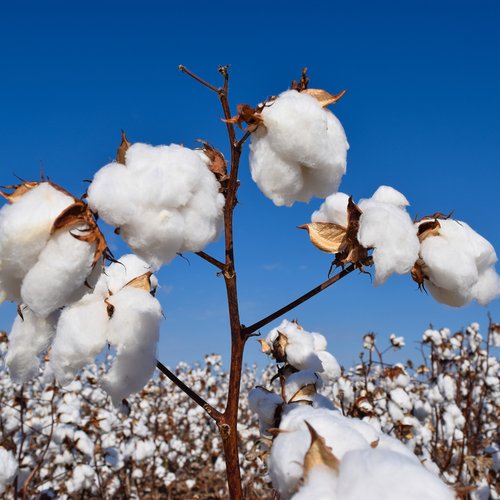Potential declines in bee populations due to varroa mite infestation could jeopardise Australian horticultural production, Rabobank says in a newly released report.
The agribusiness banking specialist says the parasitic varroa mite, which attacks European honey bees, was detected in Australia in 2022 in NSW and has since been deemed ineradicable.
“The Australian government considers the varroa mite one of the greatest threats to honeybee-pollinated horticulture in the country,” the report says.
In the report, How varroa mites might impact Australian pollinators, the bank’s RaboResearch division says this threat comes at a time when demand growth for pollination is outpacing growth in beehive numbers.

Report author, RaboResearch ANZ general manager Stefan Vogel says many horticultural crops depend on pollinators.
“While not all require European honey bees, several key industries already face high demand for these pollinators, and this demand is expected to increase. For example, European honey bees are essential for the almond, mango and macadamia sectors,” he says.
Hive demand in Australia has tripled since 1990 to meet the strong growth in horticulture pollinator needs, especially for pollinating tree nuts, the report adds.
However, the number of commercially-managed hives has barely grown.
“In the past three decades, the number of hives in Australia has remained relatively stagnant,” Stefan says.
“And pollinator needs are forecast to continue to rise significantly due to the expanding horticultural areas in Australia.”
Some growth in the number of hives occurred in the years preceding the 2022 varroa mite outbreak, primarily in recreational bee keeping.
“This slow growth falls short of the projected demand for pollinators in Australia, as we have modelled.
“We project a substantial increase in demand due to the expansion of commercial crop acreage requiring pollinators, particularly for tree crops such as almonds,” he says.
Stefan says the bank has modelled scenarios to determine the impact of varroa mites on Australian hive numbers, based on insights gained in other countries.
“These insights show after a varroa mite outbreak in other countries, such as New Zealand and Canada, the hive numbers typically experience a significant decline in the first five years, followed by a recovery usually starting after six or more years,” he says.
The RaboResearch report says for Australia, if the situation mirrors the Canadian and New Zealand scenarios (an approximate eight per cent decline in hive numbers within four to five years), the pollination needs for 2025 will still be met.
However, under the US scenario (a 25 per cent decline within seven years), they won’t.
Stefan says all scenarios indicate an Australian pollinator supply shortfall within three to five years due to the combined effects of the modelled varroa mite hive reduction and the strong growth of horticulture acreage.
“The trend is clear, the growth in the number of beehives has not kept pace with the increasing demand for pollinators,” Stefan said.
He says the small margin between the number of available pollinators and the calculated minimum required for effective pollination means Australian horticulture crops which rely on bees for pollination are vulnerable.
Stefan says tight beekeeper margins might also pose future pollinator challenges.
“Increased beekeeping costs, due to varroa mite measures and inflated inputs such as energy and labour costs, combined with continued pressure on honey prices from heavy import competition, could potentially drive up pollination service fees to counter a heavy reduction in hive numbers,” he says.
Prices for Australian-produced honey have been declining for years, nearing levels of imported honey, the report says.
“Nearly 20 per cent of Australia’s honey supply comes from imports, 45 per cent from small Australian producers and recreational beekeepers and 36 per cent from large Australian producers,” Stefan says.
“In recent years, imports have increased, particularly low-priced products from China, Malaysia and Thailand.”
He says income from honey, wax, and pollination services is crucial for beekeepers.
“However, beekeeping margins have been pressured by rising costs and declining honey prices.
“The additional expenses associated with managing the varroa mite further strain these margins and will likely lead to increased fees for pollination services,” he says.
There is a growing focus on proactive pollination strategies, even among sectors which have traditionally relied on native bees and passive pollination.
“The expected scarcity of pollinators underscores the need for effective pollination strategies,” he says.
The Rabobank report notes several key measures which could help prevent a future pollinator shortfall – increasing beehive numbers, facilitating bee movement, adopting alternative pollinator strategies and improving biodiversity.
“Firstly, hive numbers per commercial beekeeper need to grow significantly, along with improved management of pollinators by horticulture businesses,” Stefan says.
“Moving bees across state borders is also key, especially during the peak pollination period from July to October, to ensure a substantial inflow of hives into Victoria’s horticulture sector.
“And beekeepers and the horticulture sector also need to look at adopting alternative pollinator strategies, such as using technologies like drones or robotics, breeding self-pollinating crops, using and attracting more native pollinators and having horticultural companies manage their own pollinators.”
Stefan says while the varroa mite presents a formidable challenge, proactive measures and innovative strategies can help safeguard Australia's pollination needs.
“Collaboration between beekeepers, horticultural businesses, and policymakers will be essential to navigate this crisis and secure the future of pollination services in Australia,” he says.




